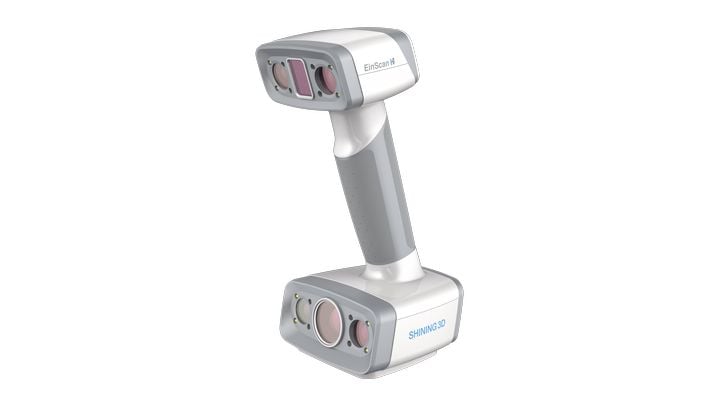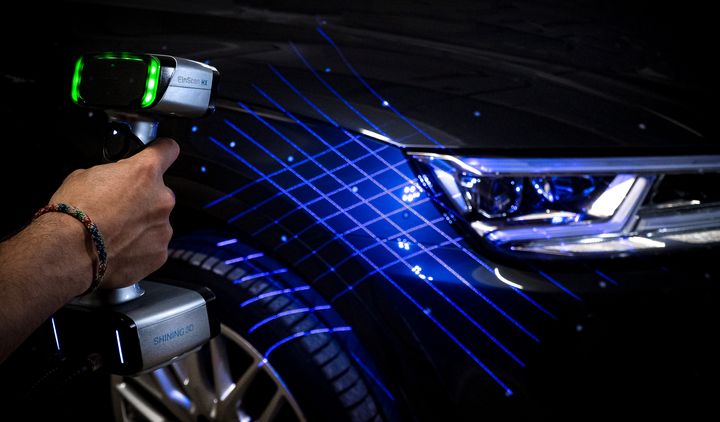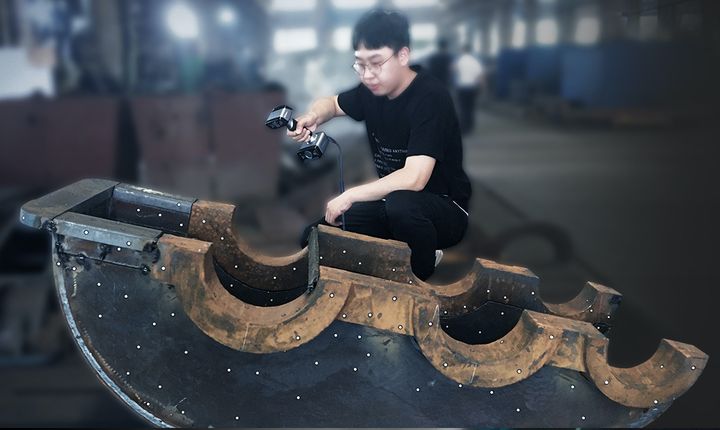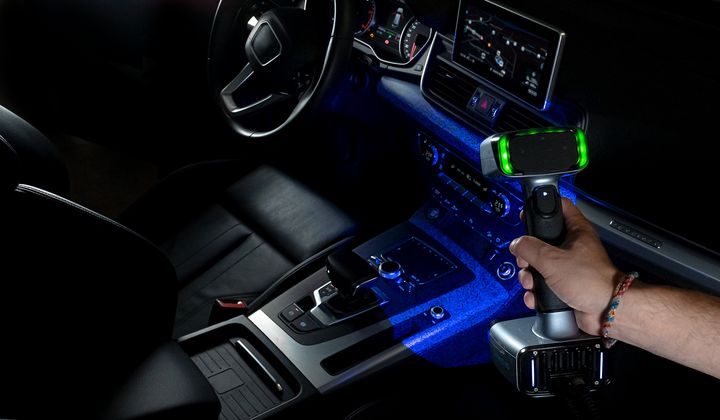
Shining 3D has announced the EinScan H and EinScan HX handheld 3D scanners.
Hangzhou, China-based Shining 3D operates worldwide from offices in Stuggart and San Francisco. The company began producing scanning devices, but since their launch in 2004 now provide a wide variety of 3D-oriented products. Today they offer a line of dental 3D printers and software, metal and resin industrial 3D printers, and five 3D scanners.
Well. Make that seven 3D scanners, after the most recent announcement.
The two new devices are the EinScan H and EinScan HX. Both are handheld units that are capable of capturing 3D data from a variety of subjects.
The new devices have an interesting feature: use of two different light sources. Typically handheld scanners use only a single light source. For example, a handheld 3D scanner might include only lasers for scanning, while another model might include a structured visible light system.

The EinScan H includes an invisible infrared light engine as well as a visible light system. This combination allows the “H” to capture structure and texture more easily than with previous units. Shining 3D explains:
“Two light sources enable an adaption to specific scanning requirements with one flexible device. Using an infrared invisible light source, 3D data of hair and dark objects can be captured at ease and the built-in color camera delivers authentic color scanning data.”
Hair and dark objects are indeed notoriously challenging to capture using any technique. Hair is difficult to capture because individual strands are so tiny they are beyond the resolution of most devices, and thus hair often appears “missing” in 3D scans.
Dark objects are also difficult to capture because, well, they are dark! Light is absorbed by their surface, not reflected, and reflected light, be it structured visible light, infrared or laser, is the foundation of most 3D scanning systems.

Somehow Shining 3D seems to have overcome these issues with their two-light combination system. Here was can see a 3D model of a person who’s been captured with the EinScan H, and it looks pretty good:

However, I have to say that the individual’s hairstyle is not particularly pathological, as far as 3D scanning goes. I’d be interested to test this device on some wild-haired colleagues to see how much more detail it can capture.

The other device announced is the new EinScan HX, a similarly built handheld 3D scanner, but with a different combination of light sources. The “HX” is equipped with an LED system for structured light scanning and a blue laser system. It’s intended for industrial uses, according to Shining 3D, who say:
“With dual blue light, EinScan HX combines the advantages of LED and laser, boosting the adaptability of scanning materials and ambient light to another dimension, and predestining the device for demanding industrial applications. In rapid scan mode, blue LED structured light is used for capturing object data. 3D data can be obtained quickly without having to apply reference points. The laser scanning mode is equipped with multiple blue laser lines ensuring high accuracy and enabling 3D scanning of reflective metal surfaces quickly, providing high-quality 3D data for reverse design, CAD/CAM and 3D printing. Scanning black surface and metal is possible now, powered by EinScan HX!”

This seems to be the case, as their promotional images definitely show it being used for rather dark surfaces that I wouldn’t normally attempt using most other 3D scanners. However, for some reason they did not provide us with images of 3D models obtained from these dark surfaces.
Nevertheless, it seems that the EinScan HX could be quite suitable for many industrial applications where 3D capture is required. Remember, dark surfaces are only occasionally encountered when scanning objects.
Shining 3D has addressed the needs of two different markets with the new devices. Whoever you are, there’s a 3D scanner for you.
Via Shining 3D
